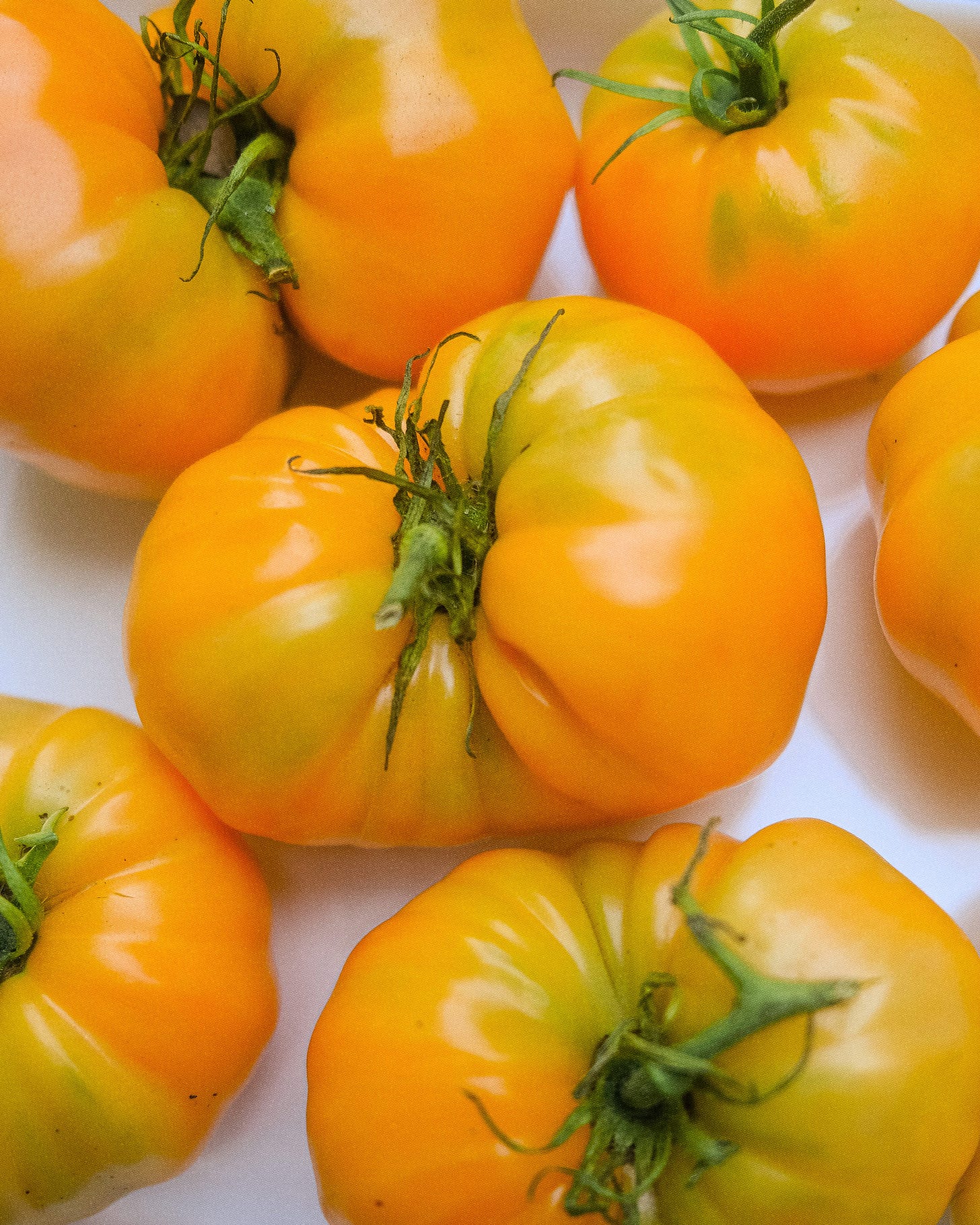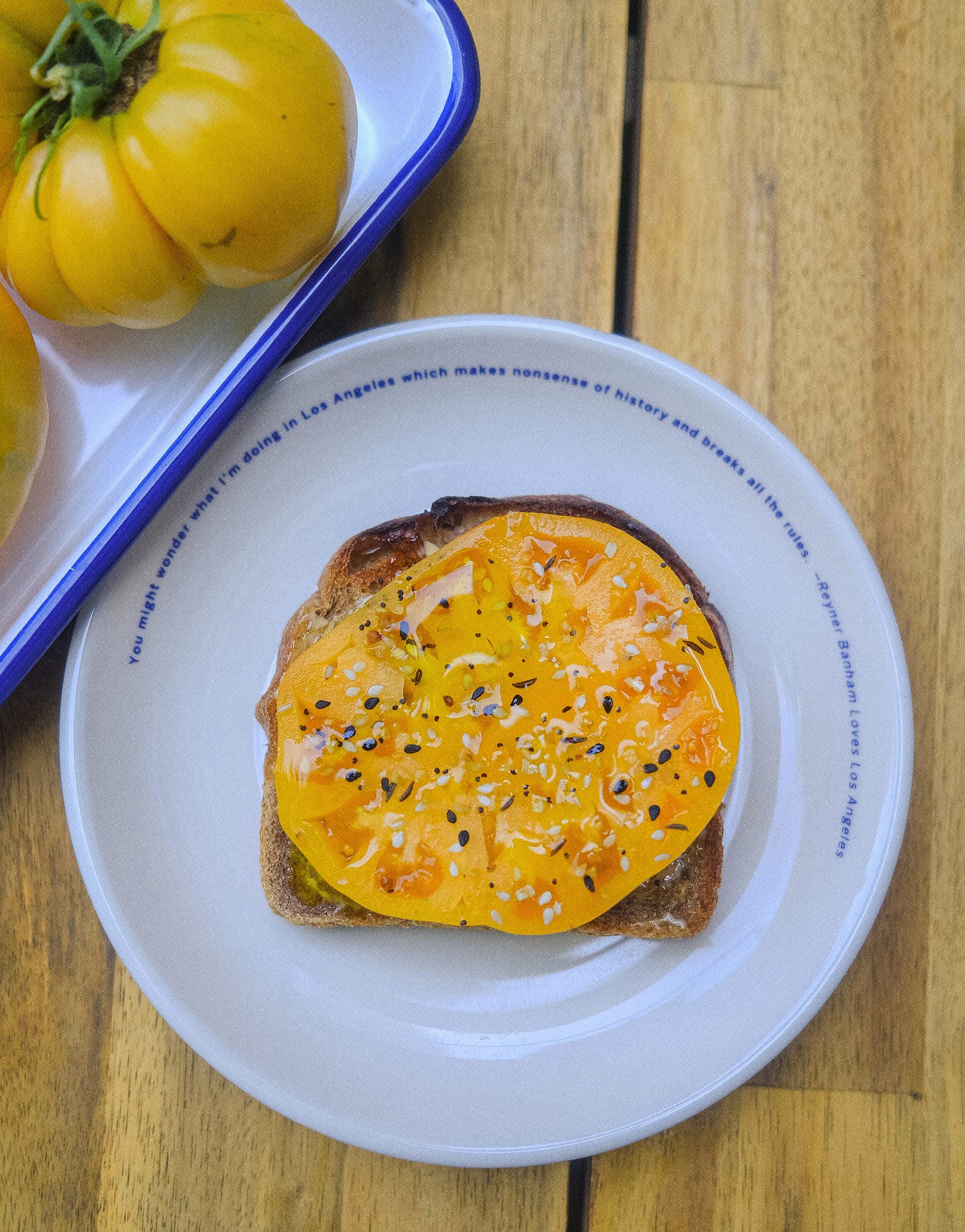Nearly everything homegrown tastes better than its grocery store counterpart, but nowhere is it more apparent than in the tomato.
The tomato’s reputation as the gateway drug of local, seasonal food is well-warranted; most commercial, fresh-eating American tomatoes are bred for their yield and harvested unripe. Those green tomatoes are reddened (not ripened) with artificial ethylene gas in warehouses and transported to all corners of the country. This produces visually-appealing, grocery store-ready tomatoes, but also renders the fruits tasteless. Taste isn’t the only consideration, there is also the well-documented inhumane worker treatment and all-but-assured pesticide usage to reckon with.
Those dull, watery tomatoes convinced me I didn’t like raw tomatoes. When I moved to the East Coast and heard about tomato sandwiches for the first time, I felt like I was missing something. “Tomato sandwich” sounded like a wetter, boring BLT. Though I didn’t cook much at the time, I wanted to understand the holy reverie these sandwiches elicited. I bought a beautiful August heirloom tomato from the farmer’s market, sliced it up, and placed it on a mayo-smeared piece of bread. I didn’t know tomatoes could taste like that—fresh, sweet, acidic, like the glorious, summer sun.
It’s early September and tomato season’s days are numbered. I am lucky enough to my own tomatoes now and as I suspected, the Goldie heirloom slicers I planted have convinced me to keep growing the big slicers. I’m hoping to squeeze in as many tomato salads and tomato sandwiches as I can. I don’t eat fresh tomatoes in November anymore. I am older and wiser now and know a summer tomato sandwich is worth the wait. 🥪
If you’d like to read more about commercial tomato production in the United States, I recommend Barry Estabrook’s “Tomatoland.”.
Kara’s Open-Faced Tomato Sandwich
Heirloom slicer tomatoes are juicy and seedy compared to a paste or sauce tomato like Roma or the famous San Marzanos and are therefore best eaten fresh and raw.
Tomatoes can be harvested somewhat unripe without sacrificing taste—look for about 25% of the fruit’s color (the “blush”) coming in before you pick. Store it inside on the counter, stem side down, until its color is fully saturated, usually 2 to 4 days. Eat it as soon as it looks ripe.
Ingredients:
1 homegrown or farmer’s market slicer tomato, sliced crosswise about as thick as your bread
1 garlic clove
Mayo, for spreading
Slice of rustic sourdough bread
Everything bagel seasoning
Olive oil
Instructions:
Toast a slice of bread.
Slice a garlic clove and gently rub the cut end against the toasted bread.
Spread mayo on toast and place tomato cut-side down.
Sprinkle with everything bagel seasoning. Drizzle with a high-quality olive oil.
Notes:
I prefer a miche-style sourdough loaf for these sandwiches (as in this recipe), but have been practicing a whole wheat sourdough sandwich bread from Tara Jensens’ Flour Power (pictured above). You can find the recipe here.
Controversial for tomato sandwiches, but I prefer a slight toast on sandwich bread nearly always (the major exception being PB&J, of course).
Don’t get carried away with the garlic rubbing. I, too, triple the amount of garlic in recipes, but for cooked garlic. Raw garlic easily overwhelms. Remember, the tomato is the star.
My preferred mayo is Kewpie, the slightly sweet, yolk-forward Japanese mayo.
Everything bagel season can go on, well, everything—cottage cheese, greek yogurt, a fried egg. My favorite is from Greenpoint Trading Co.
I like to keep my sandwich open-faced, lest it become too much bread. You can stack tomato slices if you’d like a more classic sandwich.
If you liked reading this, feel free to click the ❤️ button on this post so more people can discover it on Substack.
Home Food is edited by Jillian Goodman.




